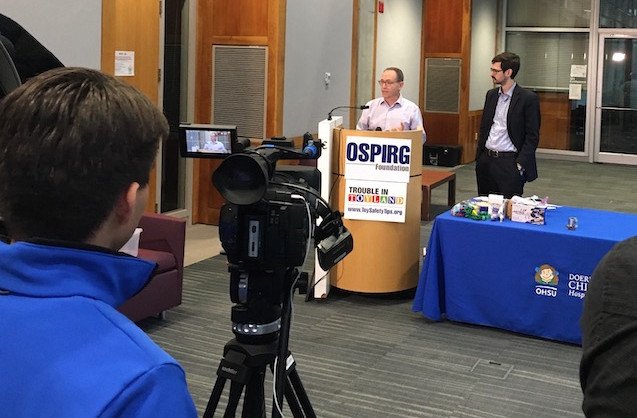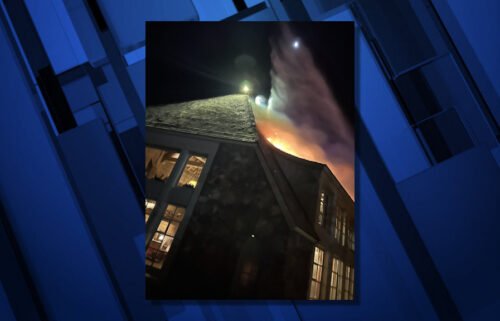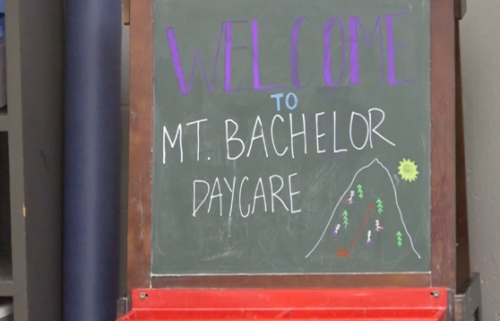Report points to toys to avoid when holiday shopping

(Update: Adding Toy Association's response to report)
By Eric Tegethoff, Oregon News Service
PORTLAND, Ore. (KTVZ) -- Choking hazards, hidden toxins and privacy concerns are among the dangers toy buyers should watch out for as the holiday shopping season begins, according to an annual report.
The 34th "Trouble in Toyland" report from the Oregon State Public Interest Research Group Foundation said there's been success making toys safer in the past few decades, but threats still linger on the shelves.
Charlie Fisher, state director of the OSPIRG Foundation, said parents can easily check whether a toy poses a choking hazard.
"They can actually test small toys for choking hazards using a toilet paper tube," he said. "So basically, just take the small part and drop it through the tube. If it goes through completely, it is likely a choking risk and should be kept away from children under the age of 3."
The report noted that wooden vehicles sold by Target were recalled this year for being choking hazards, and deflated balloons also pose a risk to kids younger than 8. Researchers also found that a number of toys contain high concentrations of toxic materials, including a slime product made with 75 times the level of boron acceptable under European Union standards.
Fisher said recalled toys lurk on the internet, but parents can check the website saferproducts.gov to see which ones have been taken off the market.
Another concern is strong magnets found in such items as construction sets, educational tiles and sculpture kits, which contain rare earth metals. The report said two doctors at a children's hospital in Portland recently removed 54 magnets from four children in just over a month. A ban on these magnets was overturned in 2016.
Fisher said the federal government could be doing more to protect kids from dangerous toys.
"We're giving advice to parents here," he said, "but it's really our analysis that it's incumbent upon the federal regulators and manufacturers to, further up in the supply stream, prevent these from getting on store shelves in the first place."
Cybersecurity is the newest threat from toys. The report advised parents and gift-givers that those so-called "smart toys" that connect to the internet often can collect and store data, leaving them vulnerable to hackers.
The report is online at uspirg.org.
In response to the report, The Toy Association released this statement:
U.S. PIRG uses the headline “Trouble in Toyland” for its annual report to needlessly frighten parents with baseless claims. What PIRG doesn’t tell you (because it would not grab headlines) is that toys continue to be one of the safest consumer product categories found in the home.
U.S. toy safety requirements include more than 100 standards and tests to ensure that toys are safe. These standards go above and beyond those for other consumer products. There are strict limits for lead and other chemicals in toys, internationally-emulated limits on sound level output, a highly effective small parts regulation that was developed with the help of pediatricians, and strict standards prohibiting the use of magnets in any toy part that is small enough to be swallowed.
Many of the items PIRG speaks of are not available, having been previously recalled (thanks to ongoing regulatory vigilance). The group also mentions several items that are not toys, such as: children’s jewelry and musical instruments, magnets, and balloons. These products are not subject to the same rigorous standards as toys and including them under a “toy” safety headline deliberately misleads parents and undermines the toy industry’s deep and ongoing commitment to safety.
The Toy Association works year-round to educate parents and caregivers to always shop at reputable stores and verified online retailers and to exercise caution when buying toys from flea markets, unverified sellers on online marketplaces, garage sales, etc., as these vendors may not be monitoring for recalled products or might not be selling legitimate toys that comply with strict U.S. laws.
Families are encouraged to always check and follow the age-grading on toy packaging. Toys labeled 3+ may contain small parts that can be a choking hazard for children under three (or kids who still mouth toys). Use a federally-approved Small Parts Tester (available online) to test small objects found around the home – not a toilet paper roll (as PIRG suggests).
Safety is the toy industry’s top priority every day of the year, not just during the holidays. For information on recalls, toy safety, and ways to ensure safe play, families are invited to visit www.PlaySafe.org, The Toy Association’s safety resource for parents and caregivers.



